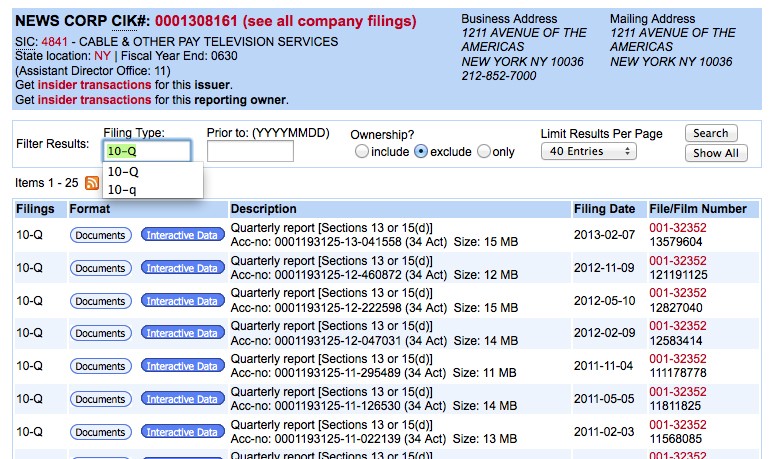If you want to understand how a company is doing, the answer is often close at hand, in its most recent quarterly report.
MEET THE 10-Q
In this tutorial, we’ll be looking at quarterly reports issued by publicly traded companies and filed with the U.S. Securities and Exchange Commission. (Some private and foreign companies also issue quarterly reports, but they often follow different rules.)
Many companies’ fiscal years follow the regular calendar, with quarters ending March 31, June 30, Sept. 30 and Dec. 31, but there are exceptions. Wal-Mart Stores, for example, ends its fiscal year on Jan. 31, to capture the full Christmas-to-New Year’s selling season in one quarter; many retailers do something similar. Knowing when a company closes its books for the quarter gives you a good sense of when it’s likely to file its 10-Q.Also called 10-Q filings, after the code used to identify them in the SEC’s database, they can range from a few dozen pages to hundreds of pages in length, especially when you take exhibits into account. Companies file 10-Qs three times a year, within 40 to 45 days after the end of their first, second and third fiscal quarters. (The fourth quarter brings an annual report, filed on Form 10-K, which will be covered in a future guide.)
EDGAR ON QUARTERLY REPORTS
Once you pull up a company’s filings, you can show just the 10-Q filings using Edgar’s Filter Results field.
You can find 10-Q filings the same way you find proxies: via the Edgar database or any of the various services that build on it. (See Resources.)
From the SEC’s Edgar search page, enter the company’s name or ticker symbol, and hit Enter (or click Find Companies).
The results page includes most or all filings by the company; to get just quarterly reports, type “10-Q” in the Filing Type field and hit Enter.
Think of a 10-Q as a regular progress report, a three-month window into the company’s financial health and operational well-being.
It’s published by the company, nominally for the company’s shareholders and potential investors.
In reality, it sometimes reads as if company lawyers drafted it purely for regulators and other lawyers.
ALL REPORTS ARE NOT EQUAL

Don’t confuse 10-Q filings with a company’s quarterly earnings report. There’s overlap, but they are very different. The earnings report is essentially a press release; with some limits, companies can emphasize the good news and downplay, or even omit, the bad news much more readily than they can with 10-Q filings. Even where it includes a range of financial data, an earnings release typically contains a fraction of the detail that a 10-Q does. The earnings release often comes out first; by the time the 10-Q comes out days or weeks alter (or even just later in the day), most reporters and many investors have moved on to something else.
That’s a mistake. The 10-Q often includes the bad news that companies would rather ignore, or hints of future developments that may be of great interest to investors, as well as to your audience. It’s still written by company officials for public consumption, but companies have legal obligations to disclose certain kinds of information in a 10-Q, however unpleasant it may be.
For reporters, some of the most useful parts of the quarterly report look at first glance like intimidating blocks of boilerplate and jargon. But before tackling those — and looking at ways of deciphering them — it will help to understand how investors generally look at the document. For most of them, the heart of the 10-Q consists of the financial statements.











